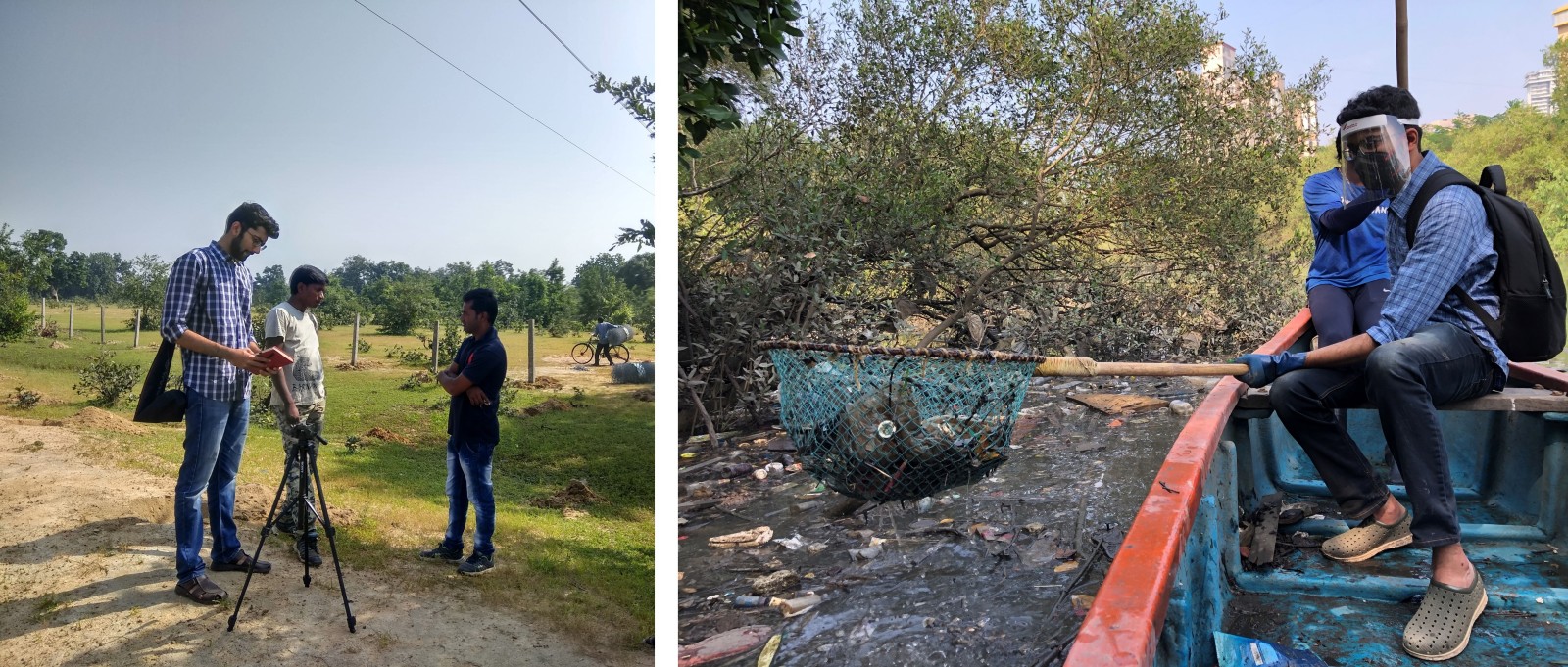Saving tigers with yash
25 February 2022
SAVING TIGERS WITH YASH
Born Free is delighted to welcome our new Network Support Consultant Yashvardhan Dalmia. Yash will help coordinate a network of local organisations, devoted to tiger conservation. Here he speaks about his aspirations for the role, and his deep-rooted love for wildlife.

How would you describe yourself?
I consider myself deeply connected to the cause of helping protect the natural world. Over the past five, I have worked in environmental conservation as a corporate social responsibility professional, tour leader and educator.
Tell us about your journey?
I have had a very keen interest in wildlife from a young age and spent hours reading nature books from the library. Every year, my mother took us to the natural history section of the museum in our city, Mumbai. This fueled my fascination and I was glued to wildlife documentaries in my free time. I idolised naturalists like Sir David Attenborough and Dr Jane Goodall and environmental studies become my favorite subject.
After graduation, I interned with Sanctuary Asia, one of India’s leading nature magazines. Next, I worked with a wildlife travel company and led tours to wildlife reserves across India. The desire to work on projects to help conserve the ecosystems which I had visited drove me to take upon the opportunity to work at a Corporate Social Responsibility (CSR) consultancy to help corporations in India invest in environmental conservation projects. I worked with partner NGOs on a biodiversity conservation project in central India and marine conservation and plastic pollution prevention project in Mumbai, India.

“Conservation of biodiversity is the most integral tool in our battle against the greatest challenge we all face today – climate change.”
What drives you?
The thought that the projects we work on have the potential to make a positive difference in the world around us by helping conserve our natural environment and combat climate change.
Why do you love wildlife?
We can learn so much from animals. I have always been in awe of the way wild animals and birds communicate, hunt, adapt, and build relations with each other and their surroundings. When wildlife is thriving in its natural ecosystem, everything seems in balance and seems connected. And humans are a part of this ecosystem too. I am sure all of us used to love animals and birds and connect with them as children but many of us sadly lose this connection as we grow up.
What inspires you about tigers?
They are a symbol of biodiversity conservation and inspire people from across age groups, cultures, and backgrounds to know more about the importance of wildlife and to do their bit for conservation. Initiatives for tigers have the potential of leading to the conservation of lesser-known but important species.
Why do you enjoy working with local communities?
It’s very enriching. I have learnt a lot about coexistence with nature, their perception of conservation projects and benefits to them, and the challenges they face. Working with local communities is crucial to ensuring the project is designed well and impacts local wildlife as well as communities positively. (Continues below…)

Why is wildlife conservation in India so important?
India, a megadiverse country with only 2.4% of the world’s land area, accounts for 7-8% of all recorded species, including over 45,000 species of plants and 91,000 species of animals (Source: IUCN). But it also has a large and growing population, a large percentage living in close quarters with wildlife. Biodiversity and conservation projects are the need of the hour, as natural ecosystems are under severe threat due to unsustainable development projects and lack of awareness among citizens about the catastrophic effects that destruction of wildlife and natural habitats could have on the survival of humans too. Conservation of biodiversity is the most integral tool in our battle against the greatest challenge we all face today – climate change.
Tell us about your new role?
This landscape-level initiative aims to deliver long-term solutions, working closely with NGOs, government officers, and local communities to protect Satpuda’s wildlife while addressing some of the most urgent needs of the people that live close to tigers. I will work closely with all the stakeholders to promote effective communication and coordination between them and monitor programme activities. I also look forward to helping the team capture stories from the field.
What do you hope to achieve?
By the end of the year, I hope to build a positive relationship with and between all stakeholders of the network. This would help us chalk out a framework to effectively monitor the project and evaluate outcomes. I believe the programme can expand and serve as a model for effective landscape conservation and inspire more individuals, NGOs, organizations and the Government to support wildlife conservation projects.
FIND OUT MORE ABOUT OUR TIGER CONSERVATION PROJECTS
Tiger image © Sanjay Karkare
